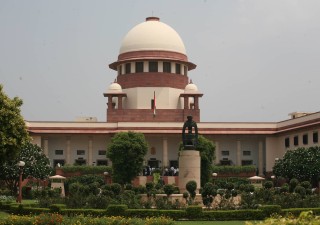Method of diagnosis and patentability in India
30 November 2023

The Chinese University of Hong Kong and Sequenom, Inc. (the appellants) filed an appeal on October 12, 2023, with the High Court of Madras, praying the court to set aside the order dated March 31, 2021, passed by the respondent (the Indian Patent Office) in Patent Application 4812/CHENP/2012. The claimed invention entitled “Fetal Genomic Analysis From a Maternal Biological Sample”. The respondent rejected the application of the appellants for a patent grant in view of Section 3(i) of the Patents Act, 1970. The Controller relied upon paragraph [0007] of the complete specification before holding that the claimed invention is a process of diagnosing that the foetus is suffering from genetic or other diseases. The appellants contended that the determination of the foetal fraction does not diagnose a disease and that, therefore, the claimed invention is not a diagnostic method.
The appellant submitted that the object and purpose of the amendment to Section 3(i) is to prevent the grant of patents to methods of diagnosis performed by a medical doctor on patients so as to ensure that medical doctors are in a position to adopt the best methods of diagnosis and treatment, without the apprehension that a patent infringement action would be initiated against them. The appellants contended that the expression “diagnostic” in Section 3(i) should be construed as limited to diagnostic methods practiced on the human body. The appellants pointed out that the Manual of Patent Office Practice and Procedure published in 2010 (the 2010 Manual), at Paragraph 08.03.06.08, states that “methods of diagnosis practised on the human and animal body is not patentable”, thereby indicating that diagnosis undertaken in vitro is patent eligible.
The appellants submitted that the method envisages carrying out in vitro analysis of fragments of nucleic acid molecules taken from a biological sample containing both the foetal and maternal DNA and the determination of the foetal fraction by following the process set out in the amended claims, including by using a computer program. The appellants submitted that such foetal fraction is the proportion of cell-free DNA (cfDNA) originating from the foetus in the biological sample. Dilating further, the appellant contended that the claimed invention is a non-invasive prenatal screening test (NIPT), which does not uncover pathology. The appellants also contrasted NIPT with invasive tests such as amniocentesis and chorionic villi sampling, which are diagnostic.
The appellant determined the foetal fraction and submitted that pathology could not be uncovered without further testing. Section 3(i) also uses expressions such as “other treatment of human beings” and “to render them free of disease”. The appellant contended that a method would qualify as diagnostic only if it is intended for treating human beings to render them free of disease. The appellant relied upon the order of the Enlarged Board of Appeal (the EBoA) in case No. G 0001/04 (the EBoA opinion). The said opinion was also relied upon to contend that the expression “diagnostic” is applicable only if all the following four method steps in diagnosis are carried out: (i) the examination phase involving the collection of data, (ii) the comparison of such data with standard/reference values, (iii) the finding of any significant deviation, i.e. a symptom, during the comparison and (iv) the attribution of the deviation to a particular clinical picture, i.e. the deductive medical or veterinary decision phase.
Since the method involved in the claimed invention does not include clinical diagnosis, i.e. the fourth method step set out above, the appellant contended that it is not a diagnostic method for the purposes of section 3(i) of the Patents Act.
The respondent argued that the EPO Guidelines (March 2023) contain inter alia the following guidance:
“The requirement that the final decision phase be included in the independent claim as an essential feature is to be applied only if it is clear from the application/patent as a whole that the inevitable result of the findings leads unambiguously to a particular diagnosis: this will have to be decided by the division on a case-by-case basis.”
The court stated that if the process does not uncover pathology for any reason, it would not be diagnostic for purposes of Section 3(i).The court mentioned thatthe claimed invention is per se incapable of identifying the existence or otherwise of a disease, disorder or condition, and further testing would be required for such purpose. In effect, it provides an indicator, foetal fraction, which is relevant for further testing to arrive at a diagnosis. The court analyzed the word “diagnostic” in Section 3(i) and concluded that the scope should not be unduly curtailed by limiting it to in vivo or definitive diagnosis, nor should it be unduly expanded by implying the words “relating to” diagnosis.
The court stated that the determination of foetal fraction is related to diagnosis but is not “diagnostic”. The court stated that with a view to incentivize inventors in these cutting-edge areas, albeit without compromising on the public policy exclusion from patent eligibility of methods of diagnosis and treatment adopted by medical doctors, there is a case to consider options such as restricting the scope of the expression “diagnostic” in Section 3(i) to in vivo processes and counterbalancing by providing for compulsory licensing. The court has allowed the appeal, and IN 4812 has proceeded to grant.








